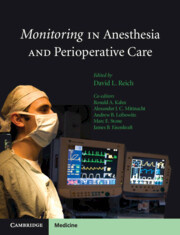47 results
Historical and archaeogenomic identification of high-status Englishmen at Jamestown, Virginia
-
- Article
-
- You have access
- Open access
- HTML
- Export citation
High levels of consanguinity in a child from Paquimé, Chihuahua, Mexico
-
- Article
-
- You have access
- Open access
- HTML
- Export citation
The Structure of U6+ Sorption Complexes on Vermiculite and Hydrobiotite
-
- Journal:
- Clays and Clay Minerals / Volume 47 / Issue 4 / August 1999
- Published online by Cambridge University Press:
- 28 February 2024, pp. 439-457
-
- Article
- Export citation
Life and death in early colonial Campeche: new insights from ancient DNA
-
- Article
-
- You have access
- HTML
- Export citation
The return of the Beaker folk? Rethinking migration and population change in British prehistory
-
- Article
-
- You have access
- Open access
- HTML
- Export citation
Characterisation of age and polarity at onset in bipolar disorder
-
- Journal:
- The British Journal of Psychiatry / Volume 219 / Issue 6 / December 2021
- Published online by Cambridge University Press:
- 25 August 2021, pp. 659-669
- Print publication:
- December 2021
-
- Article
-
- You have access
- Open access
- HTML
- Export citation
Discussion: Are the Origins of Indo-European Languages Explained by the Migration of the Yamnaya Culture to the West?
-
- Journal:
- European Journal of Archaeology / Volume 21 / Issue 1 / February 2018
- Published online by Cambridge University Press:
- 28 July 2017, pp. 3-17
- Print publication:
- February 2018
-
- Article
- Export citation
Trust, Transparency, and Replication in Political Science
-
- Journal:
- PS: Political Science & Politics / Volume 50 / Issue 1 / January 2017
- Published online by Cambridge University Press:
- 03 January 2017, pp. 172-175
- Print publication:
- January 2017
-
- Article
- Export citation
Agitation in cognitive disorders: International Psychogeriatric Association provisional consensus clinical and research definition
-
- Journal:
- International Psychogeriatrics / Volume 27 / Issue 1 / January 2015
- Published online by Cambridge University Press:
- 14 October 2014, pp. 7-17
-
- Article
-
- You have access
- Open access
- HTML
- Export citation
In situ analysis of LiFePO4 batteries: Signal extraction by multivariate analysis
-
- Journal:
- Powder Diffraction / Volume 25 / Issue 2 / June 2010
- Published online by Cambridge University Press:
- 29 February 2012, pp. 143-148
-
- Article
- Export citation
Contents
-
- Book:
- Monitoring in Anesthesia and Perioperative Care
- Published online:
- 05 July 2011
- Print publication:
- 08 August 2011, pp v-vi
-
- Chapter
- Export citation
Contributors
-
-
- Book:
- Monitoring in Anesthesia and Perioperative Care
- Published online:
- 05 July 2011
- Print publication:
- 08 August 2011, pp vii-ix
-
- Chapter
- Export citation
Index
-
- Book:
- Monitoring in Anesthesia and Perioperative Care
- Published online:
- 05 July 2011
- Print publication:
- 08 August 2011, pp 405-419
-
- Chapter
- Export citation
Preface
-
-
- Book:
- Monitoring in Anesthesia and Perioperative Care
- Published online:
- 05 July 2011
- Print publication:
- 08 August 2011, pp xii-xii
-
- Chapter
- Export citation
Copyright page
-
- Book:
- Monitoring in Anesthesia and Perioperative Care
- Published online:
- 05 July 2011
- Print publication:
- 08 August 2011, pp iv-iv
-
- Chapter
- Export citation
Chapter 1 - The history of anesthesia and perioperative monitoring
-
-
- Book:
- Monitoring in Anesthesia and Perioperative Care
- Published online:
- 05 July 2011
- Print publication:
- 08 August 2011, pp 1-8
-
- Chapter
- Export citation
Monitoring in Anesthesia and Perioperative Care - Title page
-
-
- Book:
- Monitoring in Anesthesia and Perioperative Care
- Published online:
- 05 July 2011
- Print publication:
- 08 August 2011, pp iii-iii
-
- Chapter
- Export citation
Monitoring in Anesthesia and Perioperative Care - Half title page
-
- Book:
- Monitoring in Anesthesia and Perioperative Care
- Published online:
- 05 July 2011
- Print publication:
- 08 August 2011, pp i-ii
-
- Chapter
- Export citation

Monitoring in Anesthesia and Perioperative Care
-
- Published online:
- 05 July 2011
- Print publication:
- 08 August 2011

